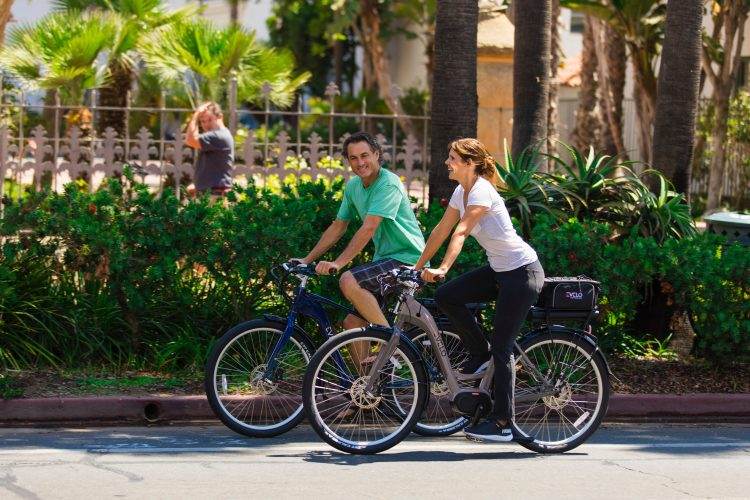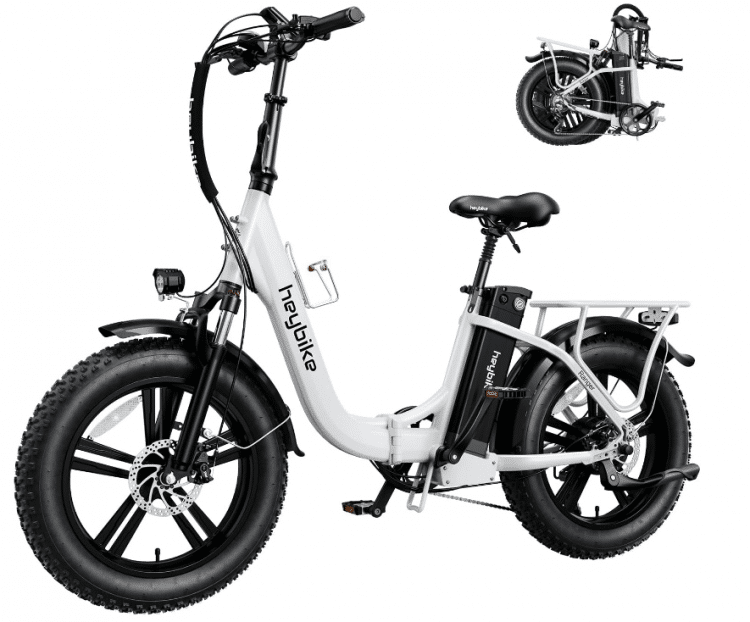Class 1 eBike (Electric Bike Go-2-Guide)
E-bikes have revolutionized the way we think about transportation. Among the myriad of classifications, the Class 1 e-bikes have earned a reputation for blending the authenticity of traditional cycling with modern technological advancements. Let’s explore these bikes in greater depth.
Links to each Class of eBikes: CLASS 1 – CLASS 2 – CLASS 3 – CLASS 4

Class 1 eBike
1. An In-depth Look at Class 1 E-bike Features
- Pedal-Powered Assistance: Unlike other e-bike categories, Class 1 e-bikes offer assistance that’s purely pedal-activated. This ensures riders still get the genuine biking experience.
- Safety Measures: Their design inherently promotes safety, with motor assistance that cuts off beyond 20 mph (32 km/h).
- Battery Range Dynamics: Depending on the battery type (like lithium-ion or nickel-cadmium), and the terrain, Class 1 e-bikes can cover anywhere from 20 to 100 miles on a single charge.
2. Technological Underpinnings of Class 1 eBike
- Regenerative Braking System: A feature in premium models, it recharges the battery during braking, extending its range.
- Smart Displays: Modern Class 1 e-bikes come equipped with screens showing vital stats – from current speed and battery health to navigation cues.
- Levels of Assistance: Many models allow riders to adjust the intensity of pedal assistance, catering to varying fitness levels and ride difficulties.
3. The Allure of Class 1 ebike: Benefits and Beyond
- Blend of Fitness and Convenience: They provide an avenue for exercise without overwhelming the rider, especially useful for those recovering from injuries or with physical limitations.
- A Green Move: Their usage can significantly cut down on carbon footprints, propelling us towards a more sustainable future.
- Economically Sound: With no fuel costs and minimal maintenance expenses, they promise long-term savings.
Class 1 eBike FAQ:
Q: What is a Class 1 ebike?
A: A Class 1 e-bike, also known as a pedal-assist e-bike, provides electric assistance only when the rider is pedaling. It does not have a throttle and its motor assistance stops once it reaches 20 miles per hour (32 km/h).
Q: What is the range of a Class 1 ebike?
A: The range of a Class 1 e-bike typically varies between 20 to 70 miles (32 to 113 km) on a single charge. However, this can differ based on battery size, terrain, rider weight, and the level of pedal assistance used.
Q: What is the maximum speed of a Class 1 ebike?
A: The maximum assisted speed of a Class 1 e-bike is 20 miles per hour (32 km/h). Beyond this speed, the electric assistance cuts off, but you can still pedal on your own.
Q: Should I buy a Class 1 or Class 3 ebike?
A: The choice between Class 1 and Class 3 e-bikes depends on your needs. Class 1 e-bikes are pedal-assist and max out at 20 mph (32 km/h), making them suitable for multi-use paths and city commuting. Class 3 e-bikes, also known as “speed pedelecs”, offer assistance up to 28 mph (45 km/h) and might be better for faster commutes. Always consider local regulations, as Class 3 e-bikes might have restrictions on certain paths.
Q: Is a Class 1 e-bike fast enough?
A: For many riders, especially those using the e-bike for commuting in urban settings or leisurely rides, a Class 1 e-bike’s top speed of 20 mph (32 km/h) is sufficient. However, speed needs can vary based on individual preferences and intended use.
Q: What are the 3 types of Ebikes?
A: The three main classes of e-bikes are:
- Class 1: Pedal-assist with no throttle; assistance up to 20 mph (32 km/h).
- Class 2: Throttle-assisted, which can propel the bike without pedaling, but with a similar speed limit as Class 1.
- Class 3: Known as “speed pedelecs”, they are pedal-assist bikes with no throttle and can assist up to 28 mph (45 km/h).

4. Venturing Beyond Urban Limits in a Class 1 eBike
- City Commuting: Their design makes them adept at weaving through city traffic, ensuring punctuality.
- Trail Adventures: Some Class 1 e-bikes are equipped for off-road terrains, making weekend adventures more enticing.
- Touring Pursuits: Attach panniers, select a route, and these bikes can be a companion for memorable long-distance tours.
5. Investing Wisely: Purchase Considerations for a Class 1 eBike
- Battery Longevity: Always check for the expected life cycle of the battery. A good quality battery can last for several years if maintained well.
- Frame and Build: Materials like aluminum or carbon fiber offer strength without adding much weight.
- Integrated Features: Some bikes come with integrated lights, GPS, or even anti-theft systems.
6. The Legal Landscape and You on Class 1 eBike
- Path and Trail Permissions: Ensure you’re familiar with local rules regarding e-bike usage. Some trails or paths may be off-limits.
- Licensing and Insurance: While many regions don’t require a special license for Class 1 e-bikes, it’s always good to check. Some riders also opt for insurance for added security.
7. Enhancing the Class 1 eBike Experience: Accessories and Connectivity
- Essential Gear: Helmets, gloves, and high-visibility clothing can elevate safety levels.
- Smart Connections: Contemporary Class 1 e-bikes often sync with apps, allowing riders to track fitness stats, journeys, and even get maintenance reminders.
8. Round-Up of Class 1 eBikes!
- Pedal Assistance: Class 1 e-bikes offer pedal assistance up to 20 miles per hour (32 km/h), but they don’t have a throttle. This means you still get a workout, but with an added boost!
- Eco-friendly: They produce zero emissions, making them a green alternative to traditional gasoline-powered vehicles.
- Accessible to Many: Due to their limited speed and pedal-assist nature, Class 1 e-bikes are allowed on many multi-use paths where traditional bicycles are permitted.
- Battery Range: Many Class 1 e-bikes can travel between 20 to 70 miles (32 to 113 km) on a single charge, depending on the battery size, terrain, and level of pedal assistance.
- Health Benefits: Riding an e-bike can offer similar health benefits as regular cycling, such as cardiovascular fitness and improved mental well-being, but with less strain.
- Economic: Over time, using a Class 1 e-bike for commuting can save significant amounts on fuel, public transport fares, and parking.
- Rise in Popularity: As cities become more congested, and there’s a greater push for sustainable transport options, e-bike sales have surged globally.
- Versatility: The market has seen a proliferation of Class 1 e-bike styles to suit various needs, from commuting to mountain biking.
- Battery Technology: Advances in battery technology not only allow for longer rides but also quicker charging times.
- Inclusivity: They make cycling accessible to individuals who might find traditional cycling challenging, including the elderly or those with physical limitations.
9. Conclusion: The Class 1 eBike Phenomenon
In the midst of our evolving world, where the clarion call for sustainable solutions and health-conscious decisions grows louder each day, Class 1 e-bikes emerge not merely as a product but as a beacon of hope and change. They encapsulate more than just the functionality of moving from one point to another; they represent a profound shift in our societal values and priorities. By choosing Class 1 e-bikes, individuals are not only investing in an efficient mode of transportation but also embracing a philosophy that harmoniously melds the cherished traditions of the past with the innovative visions of the future.
Such choices highlight a collective awareness and responsibility towards our environment, health, and the legacy we wish to leave behind. As we navigate the intricate pathways of the 21st century, it becomes evident that Class 1 e-bikes are not merely a trend but a reflection of our commitment to a better, more sustainable, and health-centric future.
Looking for more on ebike safety? Or What’s the Right Age for an Electric Bike? We also have Electric Bike Statistics 2023.





Comments are closed.